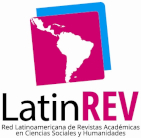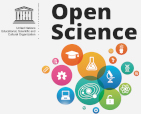Does Dall-E dream of electric calves? Art in the Age of Artificial Intelligence
Keywords:
Artificial intelligence, AI art, aesthetics, generative art, DALL-EAbstract
Based on the question Can productions made with Artificial Intelligence be considered works of art?, this article attempts to examine a series of ideas, concepts, categories and systems of art theory that allows, in the first instance, to consider the pertinence of this question for the current artistic field as well as the arguments that would support or oppose it. At the same time, the need to develop new approaches and tools for the analysis of this problem will be discussed, considering the limits of a theory of art where the figure of the artist-creator-human is ranked in artistic creation and where the irruption of these AI models challenges this alleged centrality of the human dimension in contemporary aesthetic productions.
Downloads
References
Adorno, T. (1983). Teoría Estética. Madrid: Orbis.
Agüera y Arcas, B. (2017). Art in the Age of Machine Intelligence. Arts, 6(4), p. 18. http://dx.doi.org/10.3390/arts6040018
Barthes, R. (1994). La muerte del autor. En R. Barthes, El susurro del lenguaje: más allá de la palabra y de la escritura (pp. 65-72). Barcelona: Paidós.
Benjamin, W. (2019). Palipómena, variantes y varia. En W. Benjamin, La obra de arte en la era de su reproductibilidad técnica (pp. 125-169). Buenos Aires: Ediciones Godot.
Boden, M. (2007). Authenticity and computer art. Digital Creativity, 18(1), pp. 3-10.
Boden, M. (1998). Creativity and Artificial Intelligence. Artificial Intelligence, 103(1-2), pp. 347-356.
Boden, M. y Edmonds, E. (2009). What is generative art? Digital Creativity, 20, pp. 21-46.
Danto, A. (2002). Obras de arte y meras cosas. En A. Danto, La transfiguración del lugar común (pp. 21-63). Barcelona: Paidós.
Esling, P. y Devis, N. (2020). Creativity in the era of artificial intelligence. ArXiv. https://doi.org/10.48550/arXiv.2008.05959
Flusser, V. (2014). Para una filosofía de la fotografía. Buenos Aires: La marca editora.
Franklin, B. H. (2010). War Stars: Guerra, ciencia ficción y hegemonía imperial. Buenos Aires: Final Abierto.
Goodman, N. (2013). ¿Cuándo hay arte? En N. Goodman, Formas de hacer mundos (pp. 87-102). Madrid: La balsa de Medusa.
Hertzmann, A. (2018). Can Computers Create Art? Arts, 7(2), p. 18. http://dx.doi.org/10.3390/arts7020018
Huyssen, A. (2001). Escapar de la amnesia: los museos como medios de masas. En A. Huyssen, En busca del futuro perdido: Cultura y memoria en tiempos de globalización (pp. 41-75). Buenos Aires: Fondo de Cultura Económica.
Langer, S. (1953). Feeling and form: A theory of art. Londres: Scribner Book Company.
Maquet, J. (1999). La experiencia estética: La mirada de un antropólogo sobre arte. Madrid: Celeste.
Mazzone, M. y Elgammal, A. (2019). Art, Creativity and the Potential of Artificial Intelligence. Arts, 8(1), p. 26. http://dx.doi.org/10.3390/arts8010026
Oliveras, E. (2018). La estética de fines del siglo XX. En E. Oliveras, Estética: La cuestión del arte (pp. 325-377). Buenos Aires: Emecé.
Rosenberg, H. (1952). The American Action Painters. ARTnews, 51(8), pp. 23-23, 48-50.
Shiner, L. (2014). La invención del arte. Barcelona: Paidós.
The Dallas Museum for Contemporary Arts (1958). A dialogue with Thomas B. Hess. Catalogue of the Exhibition: Action Painting. https://texashistory.unt.edu/ark:/67531/metapth176561/m1/9/
Wittgenstein, L. (2021). Tractatus logico-philosophicus. Madrid: Alianza.
Zylinska, J. (2020). AI art machine visiones and warped dreams. Open Humanities Press. http://openhumanitiespress.org/books/titles/ai-art/
Downloads
Published
Issue
Section
License
Copyright (c) 2024 Silvina Jazmín Carnero

This work is licensed under a Creative Commons Attribution-NonCommercial-ShareAlike 4.0 International License.




















